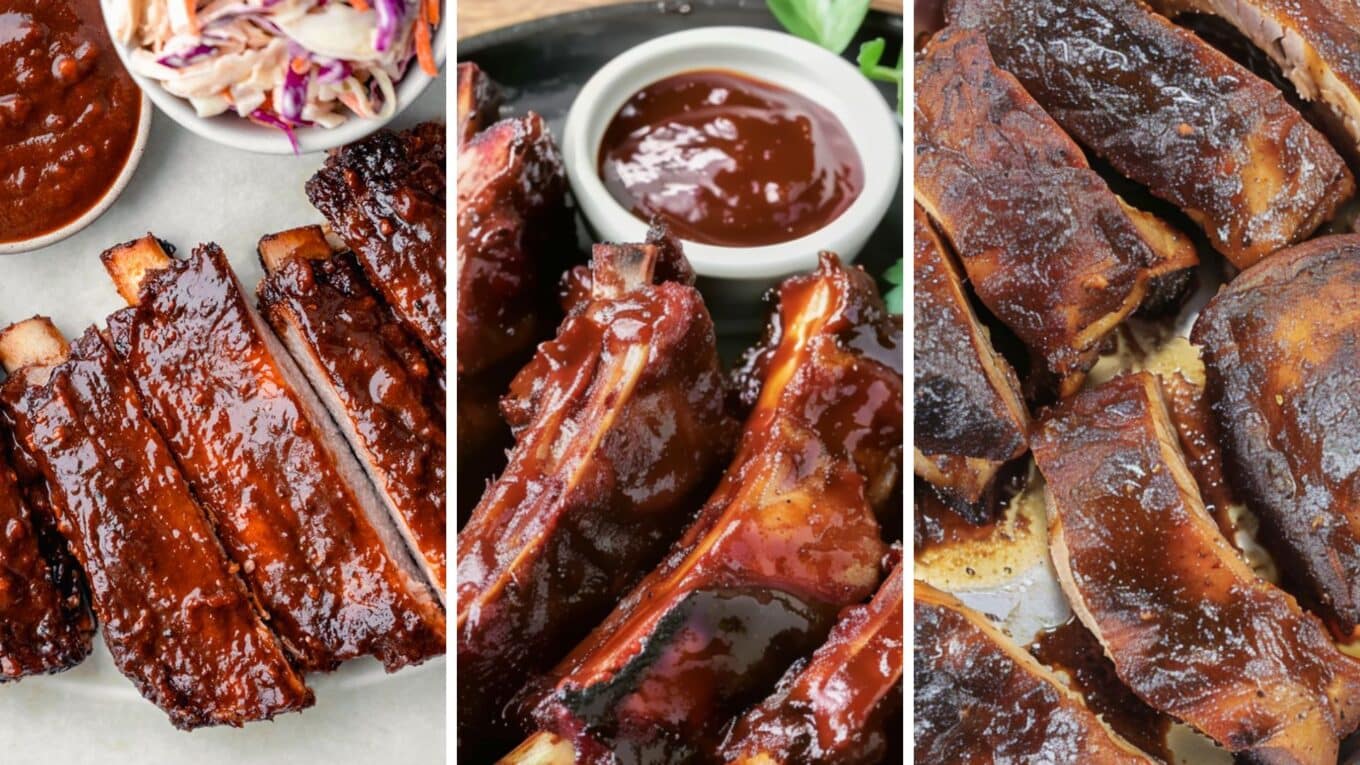Getting the temperature right is key if you want to cook tasty, tender pork ribs.
Pork ribs must be cooked slowly at a low temperature to break down the tough tissue and make the meat juicy and flavorful.
But what is the best temperature for cooking ribs, and how can you ensure you always hit that temperature?
In this post, we’ll share some tips and tricks for perfect cooking pork ribs.
With some know-how and practice, you can make lip-smacking good ribs that will have everyone returning for more.
Let’s get started!
Best Internal Temperature for Different Pork Ribs
| Types of Ribs | Ideal Temperature (°F) | Right Temperature for Tenderness (°F) |
|---|---|---|
| Spare Ribs | 145 | 200-202 |
| St. Louis Style Ribs | 145 | 200-202 |
| Baby Back Ribs | 145 | 198-200 |
| Country Style Ribs | 145 | 202-205 |
1. Baby Back Ribs

Baby back ribs are a favorite among pork lovers, known for their lean and tender meat.
These ribs come from the top of the rib cage, nestled between the spine and the spare ribs, just below the loin muscle.
To ensure safety, cooking baby back ribs to an internal temperature of 145°F (62.8°C) is important.
However, for the best texture and tenderness, wrap the ribs and continue cooking at a lower temperature, around 195°F to 203°F (90.5°C to 95°C), until they reach your desired tenderness level.
2. Spare Ribs
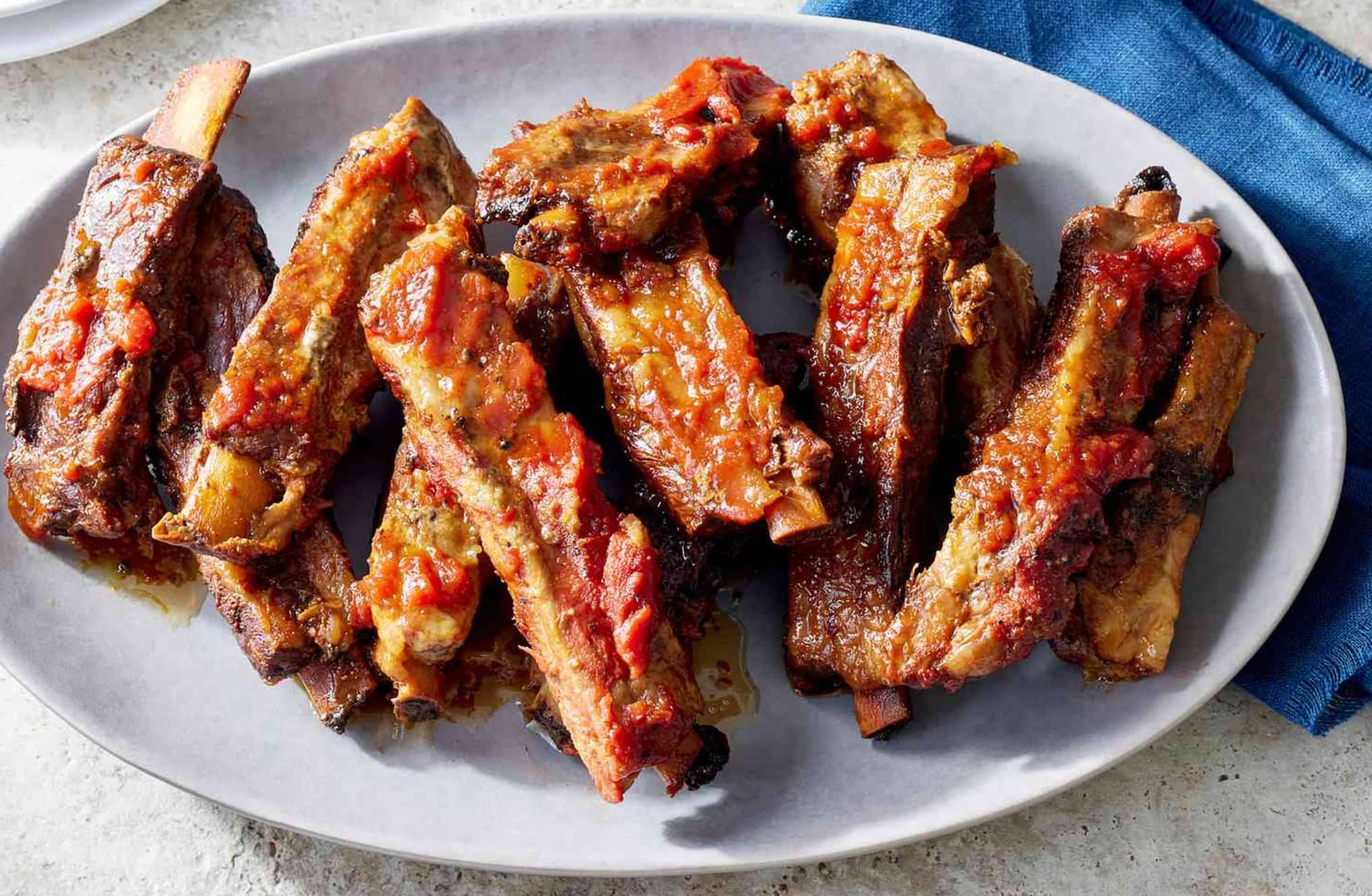
Spare ribs are larger and meatier than baby back ribs, coming from the belly side of the rib cage. To guarantee food safety, cook spare ribs to an initial internal temperature of 145°F (62.8°C).
Then, keep cooking until they reach an internal temperature between 195°F and 203°F (90.5°C to 95°C).
This temperature range ensures a perfect balance of juiciness and tenderness that will have your mouth watering.
3. St. Louis Style Ribs
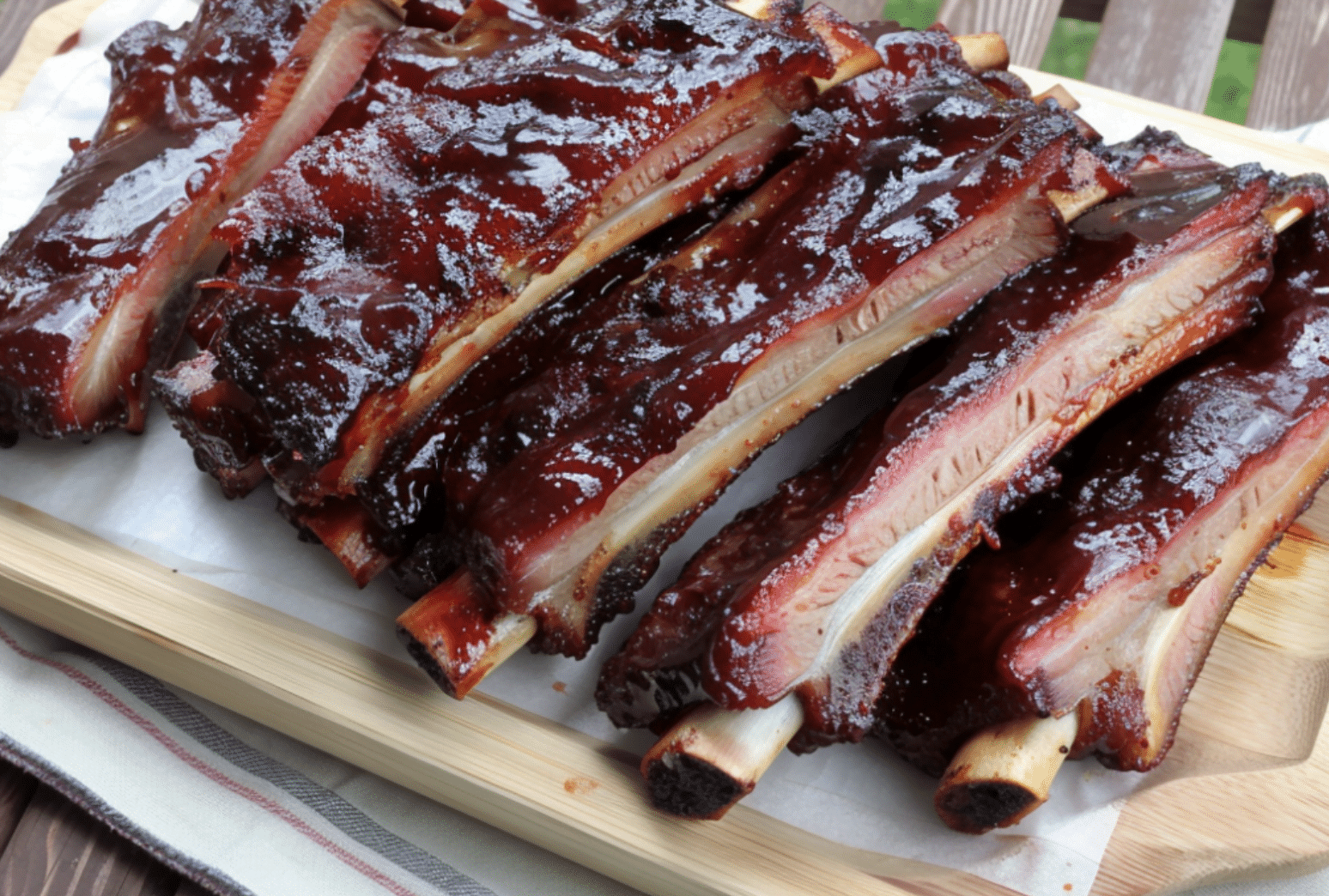
St. Louis-style ribs are trimmed spare ribs with a uniform, rectangular shape, making them easier to cook evenly.
When preparing these ribs, aim for an initial internal temperature of 145°F (62.8°C) to ensure safety.
Then, continue cooking until they reach an internal temperature of 195°F to 203°F (90.5°C to 95°C), just like spare ribs.
This will result in perfectly tender and delicious St. Louis-style ribs.
4. Country Style Ribs
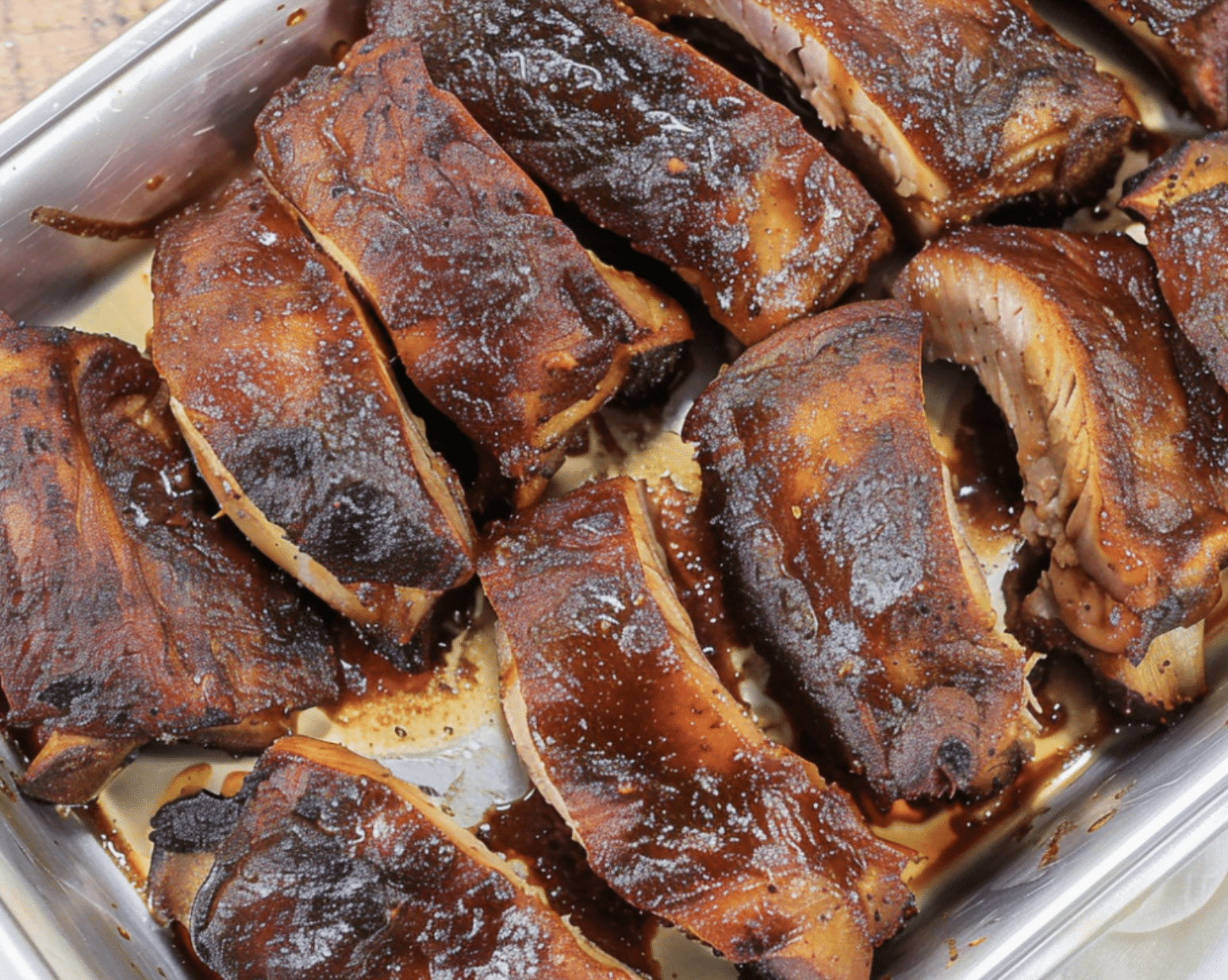
Despite their name, Country Style Ribs aren’t ribs in the traditional sense.
Instead, they are cut from the pork shoulder, close to the loin, and consist of muscle, fat, and connective tissue.
They may or may not contain bones. For safety purposes, cook Country Style Ribs to an internal temperature of 145°F (62.8°C).
However, to truly achieve the right texture and tenderness, these ribs should be cooked until they reach an internal temperature of 202°F to 205°F (94°C to 96°C).
This higher temperature range helps break down the fat and connective tissue, resulting in tender and flavorful meat.
Due to their composition, Country Style Ribs are hearty and full-flavored, benefiting from slow cooking methods like braising or smoking.
These ribs are versatile and can be cooked in various ways. They offer a rich, meaty experience that distinguishes them from other pork ribs.
Pork Ribs: Understanding the Perfect Internal Temperature
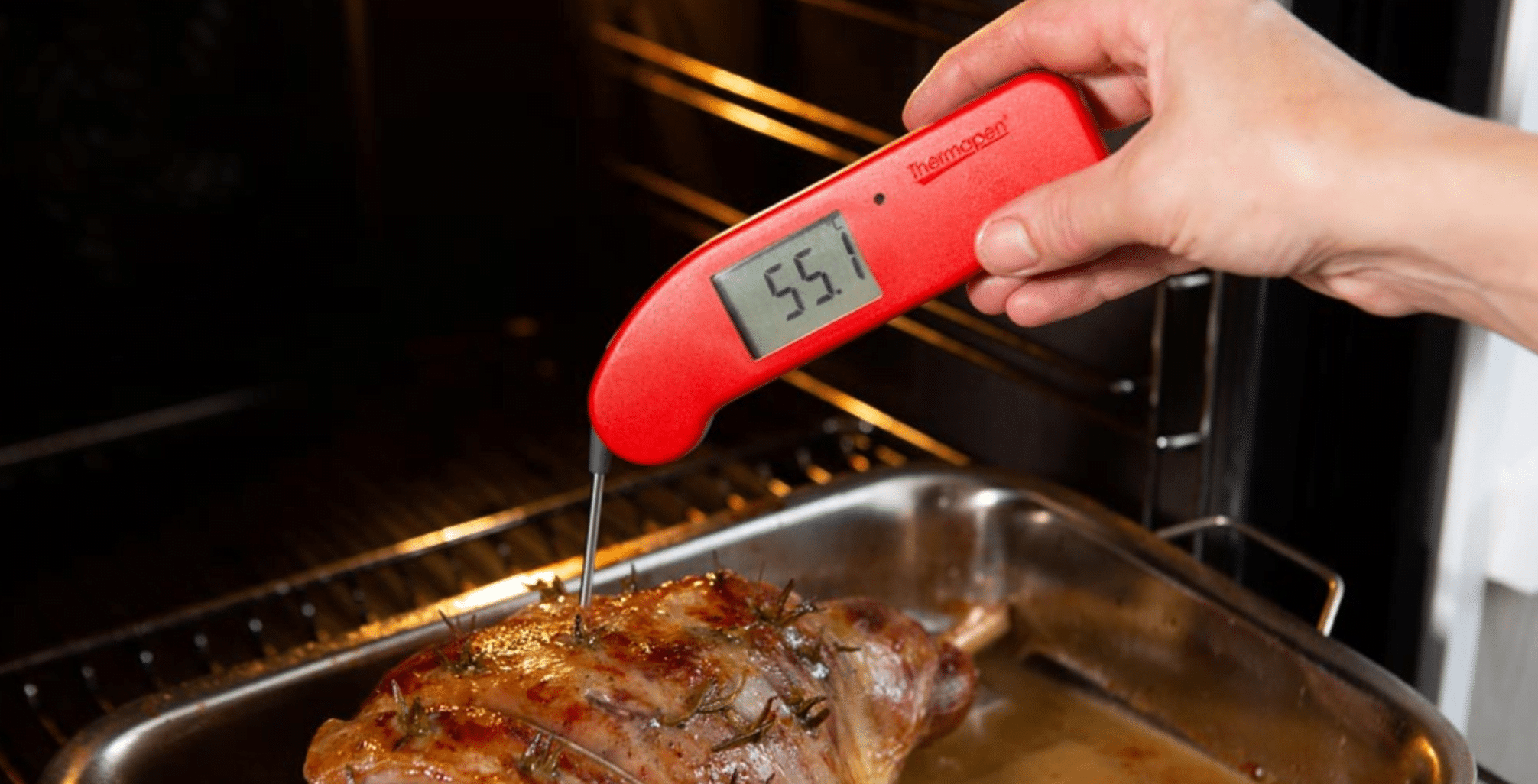
Understanding the perfect internal temperature is key to achieving the best results when cooking pork ribs.
The temperature range of 198-205°F (92-96°C) is significant for different types of ribs, as it ensures optimal tenderness and safety.
At this temperature range, the collagen in the meat breaks down, transforming into gelatin and making the ribs incredibly tender.
The fat also renders, adding flavor and moisture to the meat. This process takes time, so ribs are often cooked low and slow.
However, it’s crucial to note that before reaching this optimal range, pork ribs should be cooked to an internal temperature of 145°F (62.8°C) for food safety.
This initial temperature ensures that any harmful bacteria are eliminated, making the ribs safe to eat.
To accurately measure the internal temperature of your pork ribs, consider their structure. Ribs have bones, meat, and fat, which can affect temperature readings.
For the most precise measurement, use a reliable meat thermometer and insert it into the thickest part of the meat, away from the bone. This will give you an accurate reading of the internal temperature.
It’s also a good idea to take temperature readings from multiple spots on the rack of ribs, as different areas may cook at slightly different rates.
By checking the temperature in several places, you can ensure that the entire rack has reached the desired doneness.
Remember, the perfect internal temperature for pork ribs is a range, not an exact number.
Cooking ribs to 198-205°F (92-96°C) will result in tender, juicy meat that falls off the bone with a gentle tug.
Pork Ribs: Cooking Methods Simplified
There are several methods to choose from when cooking pork ribs, each with unique flavors and textures.
Let’s look at three popular cooking methods: grilling, smoking, and oven-baking.
1. Grilling
Grilling is a high-heat cooking method that creates a delicious, caramelized crust on the ribs’ surface. To grill ribs, start by preheating your grill to medium-high heat.
Season the ribs with your favorite dry rub or marinade, and place them on the grill grates. Cook the ribs on each side for 3-4 minutes or until they are nicely charred.
Then, reduce the heat to low and continue cooking the ribs for 1-2 hours, or until they reach an internal temperature of 198-205°F (92-96°C).
2. Smoking
Smoking is a low-and-slow cooking method that infuses the ribs with a deep, smoky flavor. To smoke ribs, preheat your smoker to 225-250°F (107-121°C).
Season the ribs with your favorite dry rub or marinade, and place them in the smoker. Smoke the ribs for 3-4 hours or until they reach an internal temperature of 145°F (62.8°C).
Then, wrap the ribs in foil or butcher paper and continue smoking for another 2-3 hours until they reach an internal temperature of 198-205°F (92-96°C).
The “3-2-1 method” is a popular variation of smoking ribs.
This method involves smoking the ribs for 3 hours, wrapping them in foil with liquid (such as apple juice or beer) for 2 hours, and then unwrapping and smoking for a final hour.
The result is tender, flavorful ribs with a slightly crispy bark.
3. Oven-Baking
Oven-baking is a convenient cooking method that produces tender, flavorful ribs without needing a grill or smoker.
To oven-bake ribs, preheat your oven to 300-350°F (149-177°C).
Season the ribs with your favorite dry rub or marinade, then place them on a baking sheet or roasting pan. Cover the ribs with foil and bake for 2-3 hours or until they reach an internal temperature of 145°F (62.8°C).
Then, remove the foil and continue baking for 30-60 minutes, or until the ribs reach an internal temperature of 198-205°F (92-96°C).
No matter which cooking method you choose, the key to perfectly cooked pork ribs is to monitor the internal temperature and adjust the cooking time and temperature as needed.
The Bend Test and Other Doneness Indicators
While using a meat thermometer is the most accurate way to determine whether your pork ribs are done, there are other methods you can use to assess doneness.
The bend test and visual cues like bone pull-back and probing techniques can help you determine whether your ribs are ready to be removed from the heat.
1. The Bend Test
The bend test is a simple way to check if your pork ribs are done. To perform this test, tongs are used to pick up the rack of ribs from the center.
The ribs should bend easily, and the meat should start to crack and separate from the bones.
If the ribs don’t bend easily or the meat doesn’t crack, they must be cooked longer.
Here’s how to interpret the results of the bend test:
- They are done if the ribs bend easily and the meat cracks and separates from the bones.
- If the ribs bend slightly but the meat doesn’t crack or separate from the bones, they must be cooked longer.
- If the ribs don’t bend at all, they are not done and must be cooked longer.
2. Visual Cues
In addition to the bend test, there are visual cues you can look for to determine if your pork ribs are done.
- Bone Pull-Back: The meat will start pulling back from the bones’ ends as the ribs cook. When the meat has pulled back about 1/4 to 1/2 inch, the ribs are likely done.
- Probing Technique: Another way to check for doneness is to use a probe, such as a toothpick or a small knife, to test the meat’s tenderness. Gently insert the probe between the bones and into the meat.
The ribs are done if the probe slides in easily and the meat feels tender. If resistance or the meat feels tough, the ribs need to be cooked longer.
While these methods can be helpful, it’s important to remember that using a meat thermometer is the most accurate way to determine if your pork ribs are done.
The internal temperature of the ribs should reach 198-205°F (92-96°C) for optimal tenderness and safety.
By combining the bend test, visual cues, and temperature checks, you can confidently assess the doneness of your pork ribs and achieve perfectly cooked, tender, and flavorful results every time.
Common Myths and Mistakes While Cooking Pork Ribs
When it comes to cooking pork ribs, several myths and mistakes can lead to less-than-perfect results.
Let’s examine some of the most common ones and how to avoid them.
Debunking the “Fall Off the Bone” Myth
One of the most pervasive myths about pork ribs is that they should be so tender that the meat falls off the bone. While this may sound appealing, it’s a sign of overcooked ribs. When ribs are cooked too long, the meat can become mushy and lose its texture.
Perfectly cooked pork ribs should have a slight tug when you bite into them, but the meat should still be tender and easily pull away from the bone. The ideal texture is often described as “tender but not falling off the bone.”
- Not removing the membrane: The membrane on the back of the ribs can be tough and chewy. Removing it before cooking can help the ribs become more tender and allow the flavors of the rub or marinade to penetrate the meat more easily.
- Not cooking the ribs long enough: Pork ribs must be cooked slowly to become tender. Cooking them too quickly over high heat can produce tough, chewy meat. Be patient and allow the ribs to cook for several hours at a low temperature to achieve the best results.
- Not monitoring the internal temperature: As mentioned earlier, the internal temperature of the ribs is the most accurate way to determine doneness. Not using a meat thermometer can lead to undercooked or overcooked ribs. Always aim for an internal temperature of 198-205°F (92-96°C) for optimal tenderness and safety.
- Not letting the ribs rest: Just like any other meat, pork ribs must rest after cooking to allow the juices to redistribute throughout the meat. Cutting into the ribs too soon can cause the juices to run out, resulting in dry, less flavorful meat. Let the ribs rest for 10-15 minutes before cutting and serving.
By debunking the “fall off the bone” myth and avoiding these common mistakes, you can create perfectly cooked pork ribs that are tender, flavorful, and sure to impress your guests.
Remember, the key to success is patience, attention to detail, and a willingness to learn and adjust your technique as needed.
Why Resting Your Pork Ribs is Crucial?
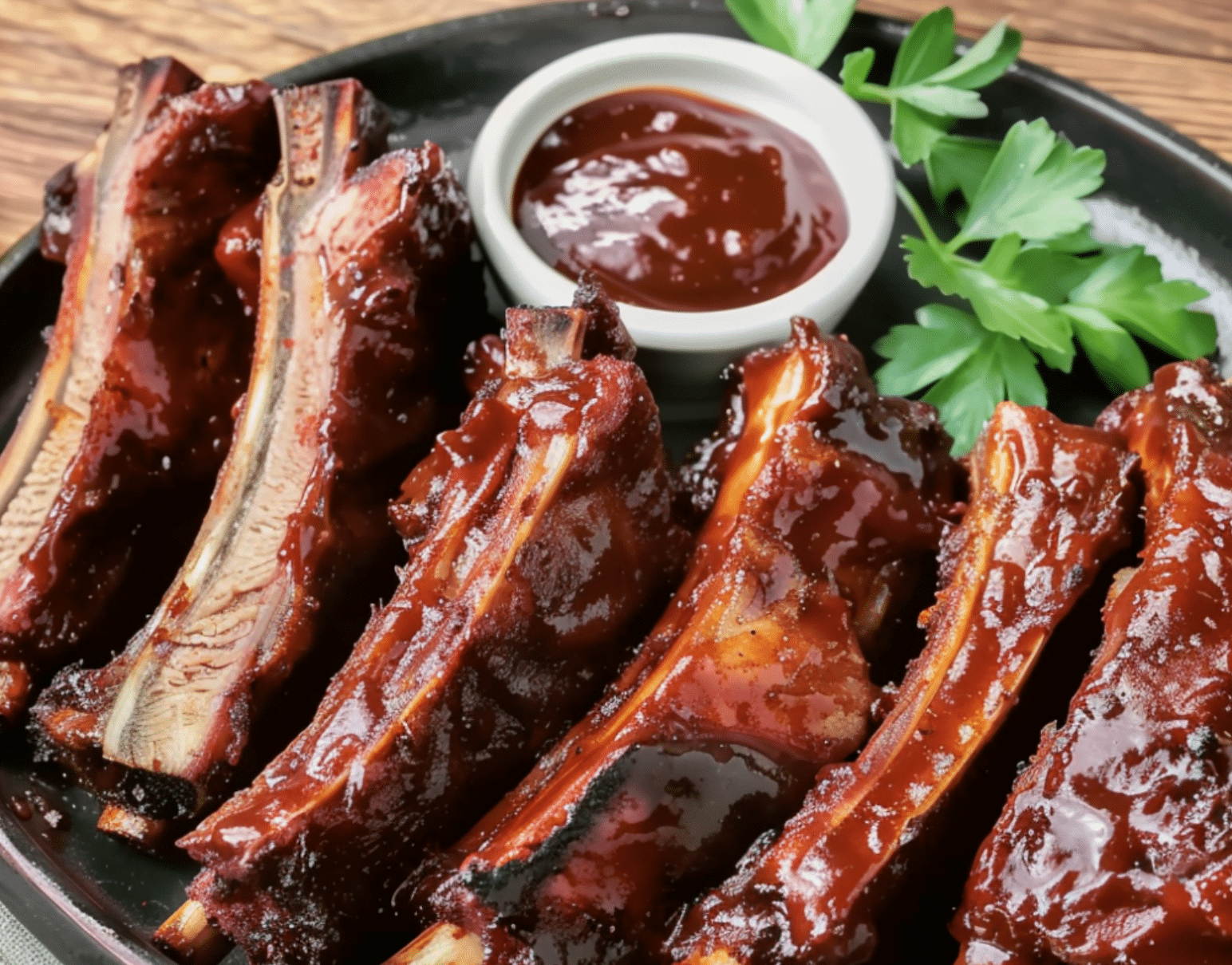
After hours of cooking your pork ribs to perfection, it can be tempting to dive right in and eat them. However, one final step is crucial for achieving the best possible flavor and texture: resting your ribs.
1. The Importance of Resting Ribs
Resting your pork ribs before serving is important because it allows the juices to redistribute throughout the meat. During the cooking process, the moisture in the meat is driven toward the center of the ribs. If you cut into the ribs immediately after cooking, those juices will run out, leaving you with dry, less flavorful meat.
By letting the ribs rest, the moisture has time to redistribute throughout the meat, resulting in juicier, more tender ribs. Resting also relaxes the muscle fibers, making the meat more tender and easier to cut and chew.
2. Recommended Resting Times and Methods
| Type of Ribs | Recommended Resting Time |
|---|---|
| Baby Back Ribs | 10-15 minutes |
| Spare Ribs | 15-20 minutes |
| St. Louis Style Ribs | 15-20 minutes |
| Country Style Ribs | 20-30 minutes |
The amount of time you should rest your pork ribs depends on the size of the rack and the cooking method used. Generally, it is best to let them rest for at least 10-15 minutes before cutting and serving.
For larger racks or ribs that were cooked using a low-and-slow method, you may want to let them rest for up to 30 minutes.
To rest your ribs, remove them from the heat source and place them on a cutting board or serving platter.
Tent the ribs loosely with foil to keep them warm, but be careful not to seal them tightly around the meat, as this can cause the ribs to steam and lose their crispy exterior.
If you’re worried about the ribs cooling down too much during rest, place them in a warm oven (around 150 or 66°C) while they rest. Just be sure not to leave them in the oven for too long, which can cause the meat to dry out.
Once your ribs have rested, they can be cut and served. Use a sharp knife to slice between the bones, creating individual ribs that are easy to eat and share.
By resting your pork ribs before serving, you’ll be rewarded with juicier, more flavorful meat that’s sure to impress your family and friends.
So, the next time you’re cooking up a batch of ribs, remember to build in a few extra minutes for this crucial final step—your taste buds will thank you!
Conclusion
Cooking perfect pork ribs is an art that requires patience, skill, and a willingness to experiment.
By understanding the key factors contributing to perfectly cooked ribs, you can create mouthwatering meals that will have your friends and family returning for more.
To recap, the key points for achieving perfectly cooked pork ribs are:
- Choosing the right type of ribs for your desired flavor and texture
- Cooking the ribs to the proper internal temperature (145°F for safety, 198-205°F for optimal tenderness)
- Using a reliable meat thermometer to ensure accurate temperature readings
- Experimenting with different cooking methods (grilling, smoking, oven-baking) to find your preferred technique
- Monitoring doneness using the bend test and visual cues like bone pull-back and probing
- Avoiding common mistakes like not removing the membrane or cooking the ribs too quickly
- Let the ribs rest for 10-15 minutes before cutting and serving to allow the juices to redistribute
By keeping these key points in mind, you’ll be well on your way to creating perfectly cooked pork ribs every time.

